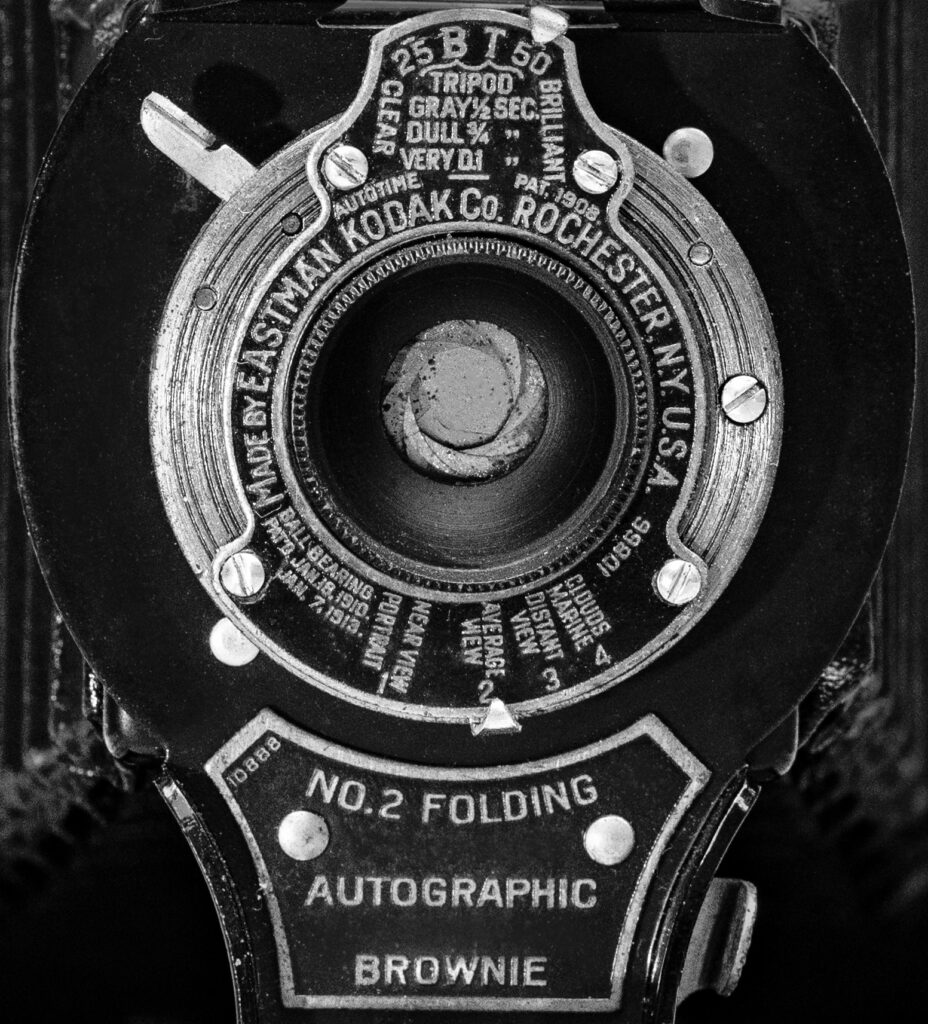
The aperture scales on low cost Kodak cameras are often marked 1-4 (sometimes 1-3). This simple scale can be found on entry level Kodak cameras with iris diaphragms and ball bearing shutters, such as my Kodak No 2 Folding Autographic Brownie. This system can easily be confused with the U.S. Universal Scale System and to a lesser extent with the modern f-stop aperture scale.
The U.S. Scale
The U.S. Universal Scale, (also called the “Uniform Scale System”) was adopted by the Royal Photographic Society of Britain in 1881. It was one of the first attempts to establish a standard for lens apertures. It is often seen on Kodak folding cameras with Rapid Rectilinear lenses. It appears similar to an f-stop scale, and can easily be confused with it.
The U.S. system is based on a simple numerical progression which doubles at each stop and f/16 corresponds to U.S. 16.
| f/stop | 4 | 5.6 | 8 | 11 | 16 | 22 | 32 | 45 |
| U.S. | 1 | 2 | 4 | 8 | 16 | 32 | 64 | 256 |
| Simple lens (Approximate) | 1 | 2 | 3 | 4 | – | |||
The f/Stop System
The f/stop (or f-stop) scale we are familiar with today is a standardised system of numbers used to represent the size of the aperture opening in a lens. The f/stop is the focal length of the lens divided by the diameter of its opening.
Larger numbers represent an aperture that lets in less light because the aperture opening is a fraction of the focal length of the lens. An 50 mm lens set to f/4 has an aperture opening in the lens is 1/4th of 50mm – 12.5 mm. This why f/4 is a larger aperture than f/8.
The f/stop scale corresponds to the sequence of the powers of the square root of 2, though the values of the ratios are rounded off to make them easier to remember and write down:
f/1, f/1.4, f/2, f/2.8, f/4, f/5.6, f/8, f/11, f/16, f/22, f/32, f/45, f/64, f128.
The reason for using a scale based on the square root of two is that it keeps the intervals equivalent to the doubling and halving of exposures. In other words each stop lets in half as much light as the preceding one in the scale. Really small apertures such as f/64 and f/128 are limited to large format cameras.
The Kodak Simple Lens Scale
Kodak’s simple 1-4 aperture marking system was a departure from the more technical scales found on more expensive cameras. It was restricted to just those four numbers (sometimes just 3) with each number in the system corresponding to a specific aperture setting. This allowed users to adjust the amount of light entering the camera without concerning themselves about the meaning of the numbers.